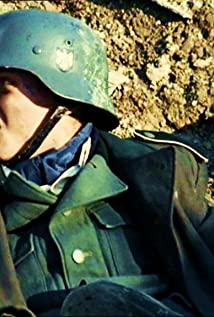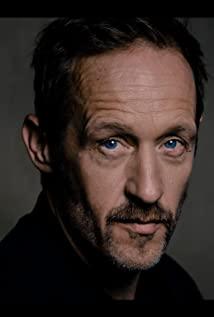The story in this film has undergone many reversals. In the film, the female police officer of Europol gradually uncovered Benjamin's secret through speculation and investigation. As an audience, guided by the film's pictures, they also experienced the establishment of assumptions again and again- Overturning assumptions - the process of establishing new assumptions. As Benjamin deciphered his sugar cube magic, audiences only saw what they wanted to see, leading one to suspect that the real truth about Benjamin might be precisely that part of the film that wasn't shown. The following is to infer Benjamin's real experience and the true intention of all his actions from the background of the story, Benjamin's character, and the language of the film. The general story of the story: Benjamin has superb hacking skills. He hacked companies, political party gatherings, government departments, etc. in the name of CLAY, carried out a series of pranks, and uploaded the video to the Internet, which has gained widespread attention and recognition, but the hacker MRX, the spiritual leader in the circle, was dismissive of CLAY. To this end, they successfully entered the German intelligence service to prove their strength. Unexpectedly, the intelligence they stole resulted in the death of the undercover hacker and also made CLAY a target of the police department. In order to clear the charges, they decided to use the back door of the European police organization's internal network as a bait to find the culprit, MRX, but fell into the trap. Benjamin decided to turn himself in to Europol and apply for protection on the condition of helping it capture MRX and the fri3nd hacking group behind it. What kind of person is Benjamin? According to Benjamin's narration, he is a complete loser in real life & Loser has no sense of existence, but he longs to be a superhero in his heart, and at the same time hopes to gain the attention of the girl he has had a crush on for many years. But I think, in fact, it was Benjamin who actively lowered his presence in real life. The more hidden he is in real life, the more he is able to make waves without scruples in the Internet world, because people will not pay attention to this humble person, let alone realize that he has amazing computer talents. This is not contradictory to his dream of becoming a superhero. Don't the superheroes in the anime such as Superman, Batman, and Spiderman hide their identities in real life? The things he did with hacking technology, although most of them were mischievous, didn't they also arouse people's attention and discussion about the use of animal experiments by pharmaceutical companies and the existence of security loopholes in government departments? His life is actually not that tragic. His childhood experience is unfortunate, but he is cared for by his grandmother. He inherited his grandmother's house and can find a stable job (delivery food?), at least food and clothing. As for more wealth or higher social status, if he wants it, he should be able to get it. In the film, he won a Porsche through a radio quiz and entered a rally disguised as a party member. As for social skills, perhaps he is indeed an introverted and reserved person, but with his excellent Social Engineering skills, gaining the trust of others, or establishing authority in a group shouldn't be difficult. What is Benjamin's purpose? Benjamin's purpose is to go back into hiding as nobody while rooting out the fri3nd hacking group that could compromise his safety. He did cause the death of an undercover hacker because of his reckless behavior, and because fri3nd was careless about his true identity, he had to be protected by turning himself in. Joining the Witness Protection Program will allow him to not be held accountable for his previous actions and get a new identity hidden from Russian cyber gangsters, but Europol is still able to grasp all his movements, which is not exactly what he hoped. Hidden target. Therefore, his primary goal is to use Europol to eradicate fri3nd represented by MRX, and at the same time not to be included in the witness protection plan. The way to achieve this is to go to Europol and turn himself in, and then he is found to be ineligible for witness protection (mentally ill ). His next goal is to successfully escape legal responsibility and acquire a new identity. He took advantage of the guilt of the female detective who was re-recognized for his credit but could not fulfill her previous promise, his ability to understand the empathy caused by the loneliness of the female detective, and the regret he showed for the mistakes he had made, so that She developed sympathy for him, thought he should let him go, allowed him to enter the server alone to modify his identity information, and then released him. He also added an additional insurance measure for his future concealment. He deliberately left loopholes and hinted with words to make the female detective believe that Marx, Stephen and Paul really exist, so as to achieve the purpose of hiding himself behind the CLAY organization. How does the film tell this story? The scenes where the female criminal police appear in the film are all actual events, which are called objective shots. Including the female criminal police questioning Benjamin, she discussed the case with the male criminal police, she verified Benjamin's account, she captured MRX with the help of Benjamin, she let Benjamin enter the server to modify the identity information, and she released Benjamin. All Benjamin's actions are shown through his confessions to the female detectives, which are confusing and confusing. What the film shows is the female detective's imagination based on these confessions and the facts she has grasped. It is called a subjective lens and a total of Divided into three parts: (The female detective meets Benjamin, Benjamin uses sugar cubes to make magic) Part 1: The female detective's imagination of the event based on Benjamin's narrative (completely consistent with the narrative). (The female criminal police discussed the case with her colleagues and found relevant people to check According to Benjamin's statement) Part II: After investigation, the female detective believes that Benjamin has multiple personalities, and based on this assumption combined with Benjamin's previous narration, the incident is restored. (The female detective captured MRX with the help of Benjamin, let Benjamin enter the server to modify his identity information, and released Benjamin) Part 3: The female detective had seen Benjamin’s disclosure of the sugar magic of the other party in the car, and guessed that the four members of CLAY really existed. A conception of the entire event. The first part is Benjamin's narration of his personal experience (also showing the audience the background of the story, that is, everything that happened before this inquiry), including his upbringing, his current state of life, his love life and CLAY The establishment of , CLAY's series of actions, and finally the crisis he encountered. In order to convince the female detective that he really had the abilities he said, he revealed the female detective's personal information, showed his true understanding of the female detective (she was lonely in her heart), and used empathy to gain the other party's trust. There are doubts in his narration, and the female criminal police can easily find the contradictions after investigation: the appearance and disappearance of other members of CLAY without specific identities in a series of scenes are very abrupt, and clues such as keys and souvenirs taken away during the action are obvious. The attribution of the objects is unclear, and the key character, Mary, has never had a relationship with Benjamin, whose mother has multiple personality disorder that can be inherited and can be triggered by the drugs Benjamin is taking. This led the female detective to infer that Benjamin also had multiple personalities, and that he did everything by himself, but he unconsciously attributed the actors of certain actions to one of his personalities (hence the whole incident). becomes what the second part shows). By law, mentally ill people cannot join a witness protection program, so Benjamin will be prosecuted. With Benjamin's help, the female detective captures MRX and regains her job recognition, but she fails to keep her promise and saves Benjamin from punishment, which inspires the female detective's guilt. On the other hand, Benjamin's performance of contrition deepens her identification with Benjamin that he, as a member of a harmless hacker group, will not cause great social harm. So she didn't mind using her powers to inflict a small favor, allowing Benjamin to enter the server alone, creating a new identity for herself that no one else knew about. In fact, upon careful scrutiny, it turns out that the inference that Benjamin has multiple personalities is untenable, and Benjamin intentionally hinted at it. The nail on Benjamin's hand couldn't have been inadvertent, his grandmother's house wasn't burned down (if it was multiple personalities, the house should have been burned by Benjamin himself), and The bullets he claimed to have killed the other team members were taken from his grandmother's hospital ward, when he was in The Hague at the time, he went back to Berlin to get the bullets, and then imagined in his mind other personalities being killed in The Hague. Very unreasonable. The most obvious thing is that he didn't need to perform the magic of changing sugar cubes into one when he turned himself in, especially since he deliberately took the sugar cubes with him, and after he was released, he took it out and performed it again, revealing the secret to the female detective. He intentionally made the female detective realize the unreasonableness of the multiple personality hypothesis, and re-inferred the fact that the other three members of CLAY did exist, and the purpose of his concealment may be to protect the other members. The female detective immediately conceived of the end of the film (the third part), where Benjamin, his teammates and his girlfriend leave by boat together. There are some interesting places in these subjective shots, such as the poster for Fight Club in Benjamin's bedroom (the protagonist of this movie is a dual personality, Benjamin seems to be imitating Norton in the first part, and the second part is quite similar to the end of Fight Club ), as well as Benjamin's nailing his own hand, which is the same as the broken finger in "Deadly Magic", which is about the sacrifices that performers need to make in order to convince the audience when performing magic tricks. What is the real truth? I think the truth of the whole thing is that most of what Benjamin did was true, but he never did it alone, he didn't have multiple personalities, and he made people mistake him for him through deliberate holes in the narrative. There are multiple personalities, and through magic and deliberate nailing, it is implied that there are four members of their team, all in pursuit of the purpose of making themselves truly invisible. Even if one day Interpol tries to find him again, according to the new inferences drawn by the female Interpol, they will only go to a hacker group with four members, or to find him through the other members he describes (because he is this The least characteristic of the four people, to find him, generally start with his social relations and find other members first), doing so will inevitably make the Interpol waste a lot of energy in finding people who do not exist. On the other hand, if Interpol is tracking down his team members, he can also find out in advance and carry out concealment (a bit like the Trojan horse in the Trojan horse, but it is defensive). The shrewdness of his method is that all the conclusions are made by the female detective (the audience), and it is very difficult to overturn his own conclusions, and it is even more difficult to overthrow his own conclusions again. There is no need to perform the magic of changing sugar cubes into one when turning himself in, especially since he deliberately took the sugar cubes with him, and after being released, he took it out and performed it again, revealing the secret to the female detective. He intentionally made the female detective realize the unreasonableness of the multiple personality hypothesis, and re-inferred the fact that the other three members of CLAY did exist, and the purpose of his concealment may be to protect the other members. The female detective immediately conceived of the end of the film (the third part), where Benjamin, his teammates and his girlfriend leave by boat together. There are some interesting places in these subjective shots, such as the poster for Fight Club in Benjamin's bedroom (the protagonist of this movie is a dual personality, Benjamin seems to be imitating Norton in the first part, and the second part is quite similar to the end of Fight Club ), as well as Benjamin's nailing his own hand, which is the same as the broken finger in "Deadly Magic", which is about the sacrifices that performers need to make in order to convince the audience when performing magic tricks. What is the real truth? I think the truth of the whole thing is that most of what Benjamin did was true, but he never did it alone, he didn't have multiple personalities, and he made people mistake him for him through deliberate holes in the narrative. There are multiple personalities, and through magic and deliberate nailing, it is implied that there are four members of their team, all in pursuit of the purpose of making themselves truly invisible. Even if one day Interpol tries to find him again, according to the new inferences drawn by the female Interpol, they will only go to a hacker group with four members, or to find him through the other members he describes (because he is this The least characteristic of the four people, to find him, generally start with his social relations and find other members first), doing so will inevitably make the Interpol waste a lot of energy in finding people who do not exist. On the other hand, if Interpol is tracking down his team members, he can also find out in advance and carry out concealment (a bit like the Trojan horse in the Trojan horse, but it is defensive). The shrewdness of his method is that all the conclusions are made by the female detective (the audience), and it is very difficult to overturn his own conclusions, and it is even more difficult to overthrow his own conclusions again. There is no need to perform the magic of changing sugar cubes into one when turning himself in, especially since he deliberately took the sugar cubes with him, and after being released, he took it out and performed it again, revealing the secret to the female detective. He intentionally made the female detective realize the unreasonableness of the multiple personality hypothesis, and re-inferred the fact that the other three members of CLAY did exist, and the purpose of his concealment may be to protect the other members. The female detective immediately conceived of the end of the film (the third part), where Benjamin, his teammates and his girlfriend leave by boat together. There are some interesting places in these subjective shots, such as the poster for Fight Club in Benjamin's bedroom (the protagonist of this movie is a dual personality, Benjamin seems to be imitating Norton in the first part, and the second part is quite similar to the end of Fight Club ), as well as Benjamin's nailing his own hand, which is the same as the broken finger in "Deadly Magic", which is about the sacrifices that performers need to make in order to convince the audience when performing magic tricks. What is the real truth? I think the truth of the whole thing is that most of what Benjamin did was true, but he never did it alone, he didn't have multiple personalities, and he made people mistake him for him through deliberate holes in the narrative. There are multiple personalities, and through magic and deliberate nailing, it is implied that there are four members of their team, all in pursuit of the purpose of making themselves truly invisible. Even if one day Interpol tries to find him again, according to the new inferences drawn by the female Interpol, they will only go to a hacker group with four members, or to find him through the other members he describes (because he is this The least characteristic of the four people, to find him, generally start with his social relations and find other members first), doing so will inevitably make the Interpol waste a lot of energy in finding people who do not exist. On the other hand, if Interpol is tracking down his team members, he can also find out in advance and carry out concealment (a bit like the Trojan horse in the Trojan horse, but it is defensive). The shrewdness of his method is that all the conclusions are made by the female detective (the audience), and it is very difficult to overturn his own conclusions, and it is even more difficult to overthrow his own conclusions again. There are some interesting places in it, such as the poster of "Fight Club" in Benjamin's bedroom (the protagonist of this movie is a double personality, Benjamin seems to be imitating Norton in the first part, and the second part is very similar to the end of Fight Club), and also There is Benjamin nailing his own hand through, and the scene in "Deadly Magic" breaking his finger is the same as the story of the sacrifice that the performer needs to make in order to convince the audience when performing magic tricks. What is the real truth? I think the truth of the whole thing is that most of what Benjamin did was true, but he never did it alone, he didn't have multiple personalities, and he made people mistake him for him through deliberate holes in the narrative. There are multiple personalities, and through magic and deliberate nailing, it is implied that there are four members of their team, all in pursuit of the purpose of making themselves truly invisible. Even if one day Interpol tries to find him again, according to the new inferences drawn by the female Interpol, they will only go to a hacker group with four members, or to find him through the other members he describes (because he is this The least characteristic of the four people, to find him, generally start with his social relations and find other members first), doing so will inevitably make the Interpol waste a lot of energy in finding people who do not exist. On the other hand, if Interpol is tracking down his team members, he can also find out in advance and carry out concealment (a bit like the Trojan horse in the Trojan horse, but it is defensive). The shrewdness of his method is that all the conclusions are made by the female detective (the audience), and it is very difficult to overturn his own conclusions, and it is even more difficult to overthrow his own conclusions again. There are some interesting places in it, such as the poster of "Fight Club" in Benjamin's bedroom (the protagonist of this movie is a double personality, Benjamin seems to be imitating Norton in the first part, and the second part is very similar to the end of Fight Club), and also There is Benjamin nailing his own hand through, and the scene in "Deadly Magic" breaking his finger is the same as the story of the sacrifice that the performer needs to make in order to convince the audience when performing magic tricks. What is the real truth? I think the truth of the whole thing is that most of what Benjamin did was true, but he never did it alone, he didn't have multiple personalities, and he made people mistake him for him through deliberate holes in the narrative. There are multiple personalities, and through magic and deliberate nailing, it is implied that there are four members of their team, all in pursuit of the purpose of making themselves truly invisible. Even if one day Interpol tries to find him again, according to the new inferences drawn by the female Interpol, they will only go to a hacker group with four members, or to find him through the other members he describes (because he is this The least characteristic of the four people, to find him, generally start with his social relations and find other members first), doing so will inevitably make the Interpol waste a lot of energy in finding people who do not exist. On the other hand, if Interpol is tracking down his team members, he can also find out in advance and carry out concealment (a bit like the Trojan horse in the Trojan horse, but it is defensive). The shrewdness of his method is that all the conclusions are made by the female detective (the audience), and it is very difficult to overturn his own conclusions, and it is even more difficult to overthrow his own conclusions again. The most uncharacteristic among them, to find him, generally start with his social relations and find other members first), doing so will inevitably cause the Interpol to waste a lot of energy on finding people who do not exist. On the other hand, if Interpol is tracking down his team members, he can also find out in advance and carry out concealment (a bit like the Trojan horse in the Trojan horse, but it is defensive). The shrewdness of his method is that all the conclusions are made by the female detective (the audience), and it is very difficult to overturn his own conclusions, and it is even more difficult to overthrow his own conclusions again. The most uncharacteristic among them, to find him, generally start with his social relations and find other members first), doing so will inevitably cause the Interpol to waste a lot of energy on finding people who do not exist. On the other hand, if Interpol is tracking down his team members, he can also find out in advance and carry out concealment (a bit like the Trojan horse in the Trojan horse, but it is defensive). The shrewdness of his method is that all the conclusions are made by the female detective (the audience), and it is very difficult to overturn his own conclusions, and it is even more difficult to overthrow his own conclusions again.
View more about Who Am I reviews











